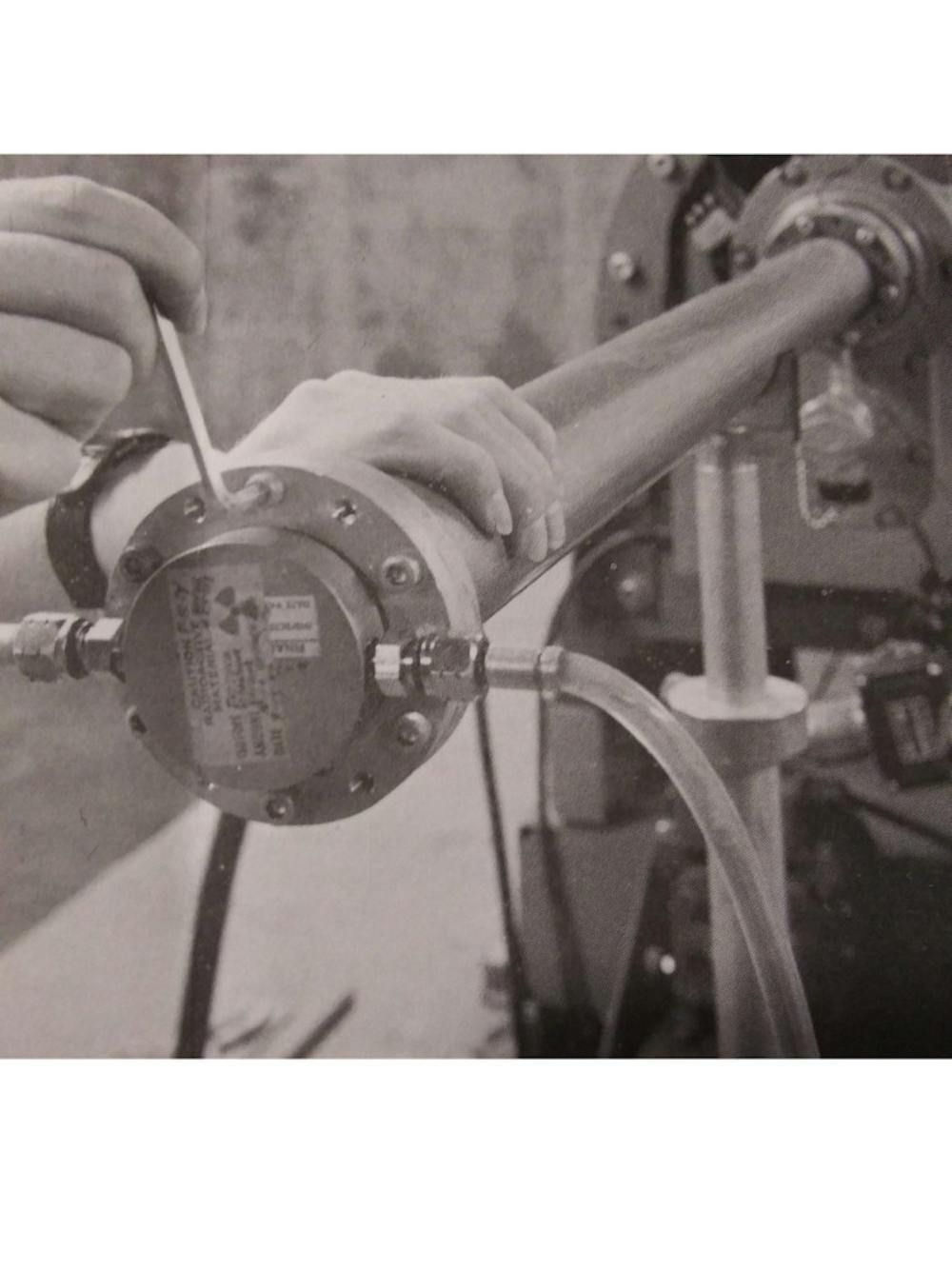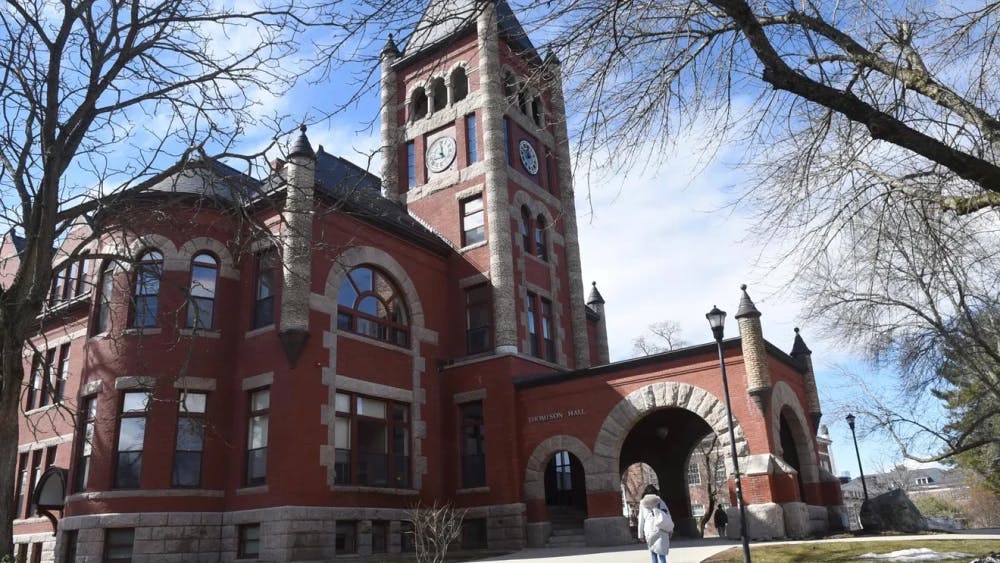Underneath the campus of the University of New Hampshire (UNH) exists a series of tunnels and a nuclear physics lab established in the 1950s on a federal grant. The nuclear physics lab is underneath DeMeritt Hall. A university pamphlet from the 1950’s entitled “Atoms at College” stated that, “with the help of the Atomic Energy Commission, the University’s Department of Physics recently installed a nuclear physics lab in Demeritt Hall.”
Precautions of the era were taken to protect the students and faculty from radiation. The lab is “located in an underground chamber which is shielded from the campus by four feet of concrete and earth,” the leaflet stated. These measures were implemented to block the dangerous output from the Van De Graaff accelerator inside the lab.
“Atoms at College” goes on to describe one of the functions of the Van De Graaff accelerator.
“The device can change the atomic structure of target materials by bombarding them with radioactive particles at the rate of several billions per second.” The university also received a $10,000 federal grant, one of several from the Atomic Energy Commission, to “develop new fluorides to replace UF6 in the preparation of radio-active materials for atomic explosions,” stated Issue 6, Volume 41, of The New Hampshire, released on October 25, 1951. UF6, more commonly known as uranium hexafluoride, is a compound utilized for uranium enrichment in the creation of fuel for nuclear reactors and even in the development of nuclear weapons.
An image from the same booklet shows a technician measuring radiation in the nuclear physics lab with the only protective gear being worn is a pair of glasses. These radioactive isotopes were used all over campus.
“The Agricultural Experiment Station is using radioactive tracers in its studies of the feeding of dairy cattle,” the pamphlet stated. Honey bees are doused with radioactive tracers to follow their flight paths, the radioactive compounds are used in vaccines, and are also implemented in other various agricultural capacities. The current chair of the physics department could not be reached for comment.
Along with the nuclear physics lab, nearby this facility is an underground utility tunnel. This subterranean passage, between James and Hewitt Halls, is in need of repairs. A sign there states a four-ton limit with no exceptions while the tunnel is undergoing maintenance.
“The repairs are necessary to support heavy vehicular traffic. The utility tunnel covers heating and cooling lines servicing the library way buildings,” Facilities Project Management Director Brenda Whitmore said. “Over time the concrete has deteriorated, most likely due to salt and other chemicals weakening the overall structural integrity of the tunnel cover to support heavy commercial vehicles, such as Waste Management trucks.”
These underground channels are expansive, meeting the heating needs of 68 buildings all across campus.
“UNH has four main underground utility paths that provide heating hot water and chilled water to the campus, they are on Main Street, College Road, Library Way and McDaniel Drive. They are under the sidewalks and in some cases, you can see the steel vault access doors,” she said.
An issue of The New Hampshire released on February 11, 1938, stated that, “a branch tunnel runs directly to Demeritt Hall from the powerhouse.” Pipes within the tunnels were originally insulated with asbestos. “Although the pipes are all insulated with asbestos, the temperature in the tunnels is usually over 90 degrees Fahrenheit.” The prime concern in that time period was the temperature, and not the cancer-causing material.
The university has worked towards making Durham an asbestos-free zone.
“UNH began the process over 30 years ago to abate and safely dispose of Asbestos Containing Materials, ACM, and we continue to this day,” Whitmore said. “There is none left in the tunnels today and we come across it less and less with most directly buried or hidden within walls.”
This isn’t an open invitation to investigate the tunnels on your own though, even if the high temperatures and possible asbestos residue aren’t reason enough.
“The tunnels are what UNH considers confined entry, they are only for utilities and are accessed with special equipment for maintenance by trained personnel when necessary.” Most of the tunnel repair projects require outside contracting, while more minor issues are handled through the department itself.
The university has progressed a long way from its use of corrosive, dangerous and radioactive substances as a power source, among other practices.
“UNH is a very green campus. Our energy costs are very low compared to general business and other colleges and universities,” Whitmore said. “We use processed landfill gas from Rochester, NH, natural gas and number two oil. It is very efficient and UNH is rarely subject to large utility interruptions.”
For those interested, the Facilities Department uploads a monthly report on all on-going campus projects that can be accessed on their website.














